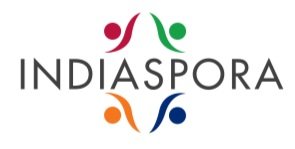Slithering Solutions: India’s Fight Against Snakebite Crisis
The gharial is a Critically Endangered species. Photo by: Saravanakumar
Growing up as a kid in the countryside of northern New York State, I was smitten by snakes, just the way most children are drawn to toys. My amazing mother saw my interest, encouraged me when I brought snakes home, and took me to the Natural History Museum in NYC, getting me books about snakes.
Rom Whitaker and the Irular people with an Indian rat snake, a (Ptyas mucosa) Chennai, Tamil Nadu Photo by: Ryan Lobo
In 1951, I was just eight when I shifted to India with my mother Doris Norden, and stepfather Rama Chattopadhyaya, and instantly fell in love with the place. The warmth of its people and my passion for wildlife led me on a journey over the next seven decades. I was fascinated by two iconic reptiles of India - the gharial crocodile from the northern rivers and the king cobra from the southern rainforest. For me, it wasn't just about saving the animals from the destruction we humans were causing in trying to get our resources; it was also about preserving nature's balance by protecting its habitat. Because caring for the environment and its animals benefits us as well.
In 1961, I returned to the U.S. for college, but traditional studies didn't interest me. I joined the Miami Serpentarium, working with my mentor William Haast. Returning to India in 1967 and realizing India needed a snake park, I was introduced to the Irula tribe by a friend. They were amazing at catching snakes, but sadly, they were misusing their skills in the snake-skin industry. The government banned it as snakes were over-exploited. In 1969, I opened a snake park near Madras to dispel snake myths, hiring Irulas as caretakers. In 1971, with the help of the Chief Conservator of Forests, we shifted the Madras Snake Park to the Guindy Deer Park in the city, drawing a million visitors in the first year. In the mid-1970s, I started the Madras Crocodile Bank Trust with my ex-wife Zai Whitaker, near Mahabalipuram's shore temple. This was an important initiative to help save crocodiles and is now one of the most popular attractions in Chennai.
Meanwhile, the Irular Tribe needed to secure a stable livelihood. Finally, in 1978, we started the 'Irular Snake-catchers Cooperative,' giving the tribe a livelihood by continuing to catch snakes but now just for the venom, with the snakes released back to the wild. The Cooperative today provides 80% of India's snake venom for antivenom, saving lakhs of lives around the country.
After the ban, Rom Whitaker worked with the Irulas to establish a snake catchers’ cooperative to extract venom for the anti-venom industry. Photo by: MCBT photograph
My early days with snakes taught me we needed to change how people see them. In India, snakebites cause over 58,000 deaths each year and many thousands more are permanently injured. Awareness is crucial, especially about medically important venomous snakes like the spectacled cobra, Russell’s viper, common krait, and saw-scaled viper, most commonly found across the geographical region.
Dealing with snakebites in rural areas is tough. Lack of healthcare means victims often don't make it to a hospital on time. With so many snake species, identifying the dangerous ones is tricky. People sometimes go to traditional healers, and transportation issues delay treatment. On top of that, different venom types and a lack of trust in healthcare workers make things even more complicated. Sadly, snakebite isn't a priority in many hospitals, and healthcare workers often need proper training.
One of our volunteers in Vishakapatnam, Andhra Pradesh is educating the locals about snakes and snakebite prevention. Photo by: Sanjay K
My team and I have been working to address snakebite issues in India for decades. It's a problem primarily affecting rural people, mainly farmers and field workers. We call it a "poor man's disease" because it not only hurts the victims but also puts a heavy burden on their families. Our effort involves educating rural communities on preventing snakebites, guiding them on safety measures, and helping identify the big four dangerous snakes. We conduct workshops for local rescuers, and Forest, and Fire Departments, aiming to reduce conflicts between humans and snakes, ensuring the safety of both.
We're also training ASHA workers and health staff to boost their confidence in administering antivenom (AV). Some hesitate due to the risk of allergic reactions from antivenom. We're collaborating with researchers to develop better antivenom, not only to reduce reactions but also to make it region-specific. To bridge gaps, we're partnering with government agencies and helping the Irula Cooperative to establish a serpentarium venom collection center. Recognizing the under-reporting of snakebite incidents, we're recommending a snakebite registry and working on a state and national plan for snakebite to address the issue regionally. Together, we aim to make a positive impact on this widespread issue.
We work with regional, national, and international organizations. The Global Snakebite Initiative (GSI), a US-based organization, is one of our international partners. The goal of GSI is to enhance the standard, efficacy, and affordability of treatment options available worldwide. Thanks to funding from CSR, our efforts have reached new heights. As a reader, you can also help us out by forwarding this article to the right audience and helping us save the lives of both humans and snakes.
The two women harvesting rice are just feet away from a highly venomous Russell’s viper and they are seconds away from being bitten. Photo by: Gnaneswar Ch
Website: https://madrascrocodilebank.org/
Snakebite Donation: https://madrascrocodilebank.org/snakebite_donation
Instagram: madrascrocbank
Youtube: https://www.youtube.com/@madrascrocbank
Contact Us:
Gnaneswar Ch
Project Leader | Snake Conservation & Snakebite Mitigation
Email: snakebite@madrascrocodilebank.org
About the Author
Romulus Whitaker was born in New York, in 1943. Came to India in 1951. Set up Madras Snake Park in 1969, Crocodile Bank in 1976, Andamans Centre of Island Ecology in 1989, and Agumbe Rainforest Station in 2005. Awards: Whitley Fund for Nature, Rolex, Peter Scott, Salim Ali, Padma Shri.






